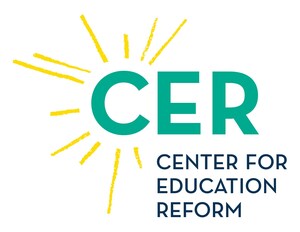Majority of States Receive Below Average Grades on Education Reform Laws
New report finds that even with federal prodding, most laws fall flat
WASHINGTON, Jan. 10, 2011 /PRNewswire-USNewswire/ -- Only 11 states and the District of Columbia have charter school laws that do not require significant improvements in order to allow for the effective creation and growth of these innovative school options, according to a new study and legislative blueprint released today by The Center for Education Reform (CER). Of the rest, 14 states received a grade of 'C,' and 15 a 'D' or 'F' for their laws governing charter schools in CER's Charter School Laws Across the States.
According to the report, excitement over charter schools—which dramatically increased after both 'Race to the Top' and the release of 2010's critically-acclaimed film Waiting for Superman—has not been matched by substantive improvements to state-level public policy related to these schools. The result, CER says, is increased waiting lists at charter schools and lost years for far too many children who seek access to better learning environments.
"In November, voters across the nation voted overwhelmingly for dramatic and immediate change in state legislative bodies, and a key component of their choices was education reform," said Jeanne Allen, president of The Center for Education Reform. "As lawmakers across the country map out their legislative agendas for 2011, they should match their election-year promises with policy improvements that will allow for the true expansion of charter schools across the nation."
In the 12th edition of Charter School Laws Across the States, CER identifies three specific priorities that lawmakers must incorporate into their 2011 law changes:
Authorizer Reform. One of the hallmarks of a great charter school law is the ability for multiple entities—including universities, mayors, and independent state charter school boards—to allow for the creation of charter schools. Far too many states place authorizing power solely in the hands of local school boards, which have no incentive to allow charter schools.
Cap Removal. In many states, random and arbitrary caps—or limits—are placed on the number of schools that can operate or the number of students who can access charter schools. CER said that eliminating these capricious caps—along with authorizer reform—is a healthy blueprint for charter law improvement.
Funding Equity. Despite the fact that charter schools are public schools, the average charter school receives more than a thousand dollars less, per student, than a conventional public school. This historically inequitable funding formula—embraced by many states—immediately places charter schools, which face higher accountability measures, at a disadvantage.
"By introducing legislation that permits multiple charter school authorizers, eliminates unnecessary caps that only serve to punish children and provides equitable funding for charter schools, the country can witness a new renaissance in American education flourish in this next decade," Allen said.
To download a copy of Charter School Laws Across the States, please visit http://charterschoolresearch.com.
For more information about The Center for Education Reform, visit http://edreform.com.
SOURCE Center for Education Reform
WANT YOUR COMPANY'S NEWS FEATURED ON PRNEWSWIRE.COM?
Newsrooms &
Influencers
Digital Media
Outlets
Journalists
Opted In





Share this article